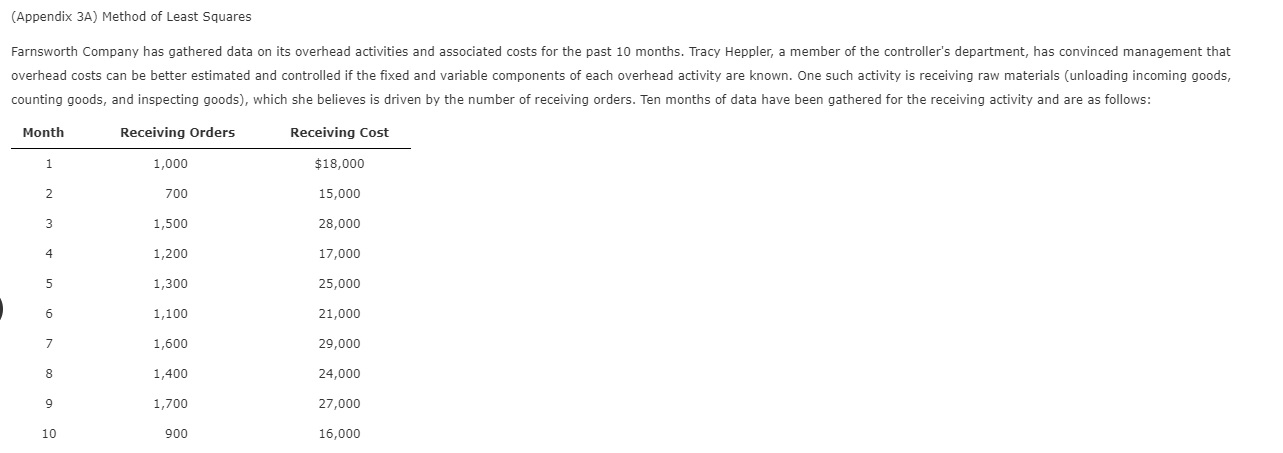


(Appendix 3A) Method of Least Squares Farnsworth Company has gathered data on its overhead activities and associated costs for the past 10 months. Tracy Heppler, a member of the controller's department, has convinced management that overhead costs can be better estimated and controlled if the fixed and variable components of each overhead activity are known. One such activity is receiving raw materials (unloading incoming goods, counting goods, and inspecting goods), which she believes is driven by the number of receiving orders. Ten months of data have been gathered for the receiving activity and are as follows: Month Receiving Orders Receiving Cost 1,000 $18,000 700 15,000 1,500 28,000 1,200 17,000 1,300 25,000 1,100 21,000 1,600 29,000 1,400 24,000 1,700 27,000 900 16,000 Suppose that Tracy has gathered two more months of data: Month Receiving Orders Receiving Cost 11 1,200 $28,000 950 17,500 Note:For the following requirements, round the intercept terms to the nearest dollar, round the variable rates to the nearest cent, and R2 to two decimal places. Required: 1. Run two regressions using a computer spreadsheet program such as Excel. First, use the method of least squares on the first 10 months of data. Then, use the method of least squares on all 12 months of data. Select the results for the intercept, slope, and R2 for each regression. Enter the R2 values as decimals to two decimal places rather than as percentages. 12 Months' Data Intercept 10 Months' Data $3,212.12 x 15.15 Slope $3,820.11 15.10 0.93 x x 0.96 x 2. Conceptual Connection: On your own paper, prepare a scattergraph using all 12 months of data. Which month appears to be an outlier? 11 3. Conceptual Connection: Rerun the method of least squares, using all the data except for Month 11. (You should now have 11 months of data.) What is the variable rate (to the nearest cent) and the fixed cost that would be used in a cost formula for receiving based on these results? Variable rate per receiving order $ 15.18 $3,168.56 Fixed cost Calculate the predicted receiving cost for a month with 1,450 receiving orders. In your calculations, round variable cost per unit to two decimal places. Round your final answer to the nearest dollar. $ 25,179









